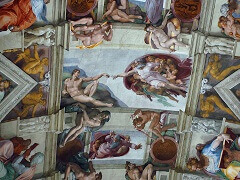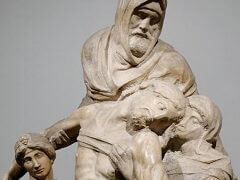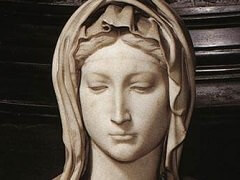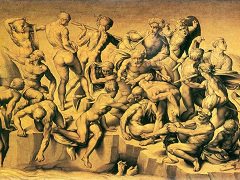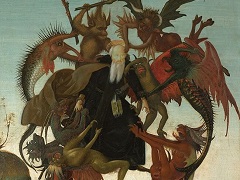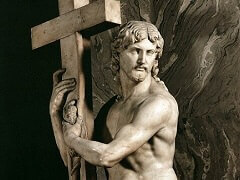Brutus, by Michelangelo
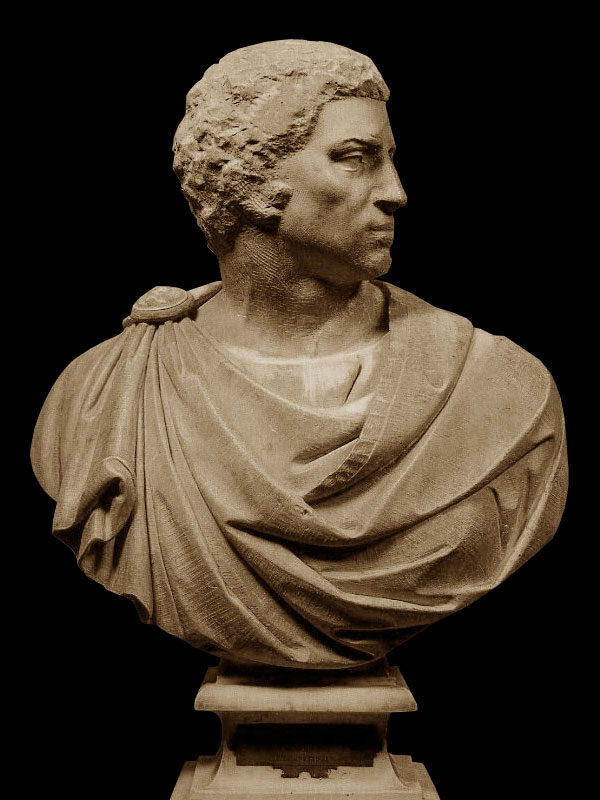
The vital energy of the bust springs forth from the abrupt turn of the head on the neck, whereby the figure's gaze is directed above the shoulder: Michelangelo had previously experimented with this contrapposto in a number of male figures, for effects that were at times more subdued, other times more intense. The Brutus concentrates on a faraway vision from which the viewer is excluded, his brusque and severe attitude transmitting moral tension and political passion. This is enhanced by the austerity with which the face is treated: although the volumes are finished, the surface is not polished.
The cap of close-cropped hair all'antica, the quick, frowning countenance just chiselled out, bestow the head with square, irrevocable resolution. Whereas Michelangelo is attributed the fibula, the archaeological citation coinciding with the discreet homage to Giannotti in the form of a portrait, and the group of folds just below it (skilfully wrinkled with the help of a capricious fold), it is hard to accept his authorship of the remainder of the drapery, so predictable in the volumes and so unlike Michelangelo in the handling of the claw-chisel. Calcagni's intervention has in fact been suggested for this part of the work, although the artist's devoted helper probably didn't dare touch the head. An expression wrinkle to the left of the nose, which actually resembles a scar, could be Calcagni's, proving his difficulty at managing the carving tool. This might explain why he left it at that.


